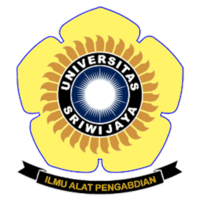Optimalisasi Pengemasan Limbah B3 Filter Oli Bekas dengan Metode Pressure Hydraulic System (Studi Kasus : PT Satria Bahana Sarana Job Site TJMO)
Abstract
Fitriani A, Darussalam G, Adytama A. 2020. Optimizing the Packaging of Used Oil Filter Hazardous Waste with Pressure Hydraulic System Method (Case Study : PT Satria Bahana Sarana Job Site TJMO). In: Herlinda S et al. (Eds.), Prosiding Seminar Nasional Lahan Suboptimal ke-8 Tahun 2020, Palembang 20 Oktober 2020. pp. xxx. Palembang: Penerbit & Percetakan Universitas Sriwijaya (UNSRI).
Coal is one of the options for fulfilling electricity needs in Indonesia. This coal production process raises environmental problems, one of which is B3 waste. The packaging of used oil filters is often a problem in temporary hazardous and toxic waste storage. The objective of this research was to identify the hazardous and toxic waste generated from the mining activities of PT Satria Bahana Sarana and optimized the packaging of used oil filters so that they can be stored in the temporary hazardous and toxic waste storage in accordance with applicable regulations. The method used was divided into 4 stages, namely a preliminary survey, data collection, literature study and data processing. The result showed that PT Satria Bahana Sarana’s temporary hazardous and toxic waste storage met the requirement for a storage area. The source of hazardous and toxic waste came from the maintenance and repair external heavy equipment units activities from internal and external PT Satria Bahana Sarana. The most hazardous and toxic waste generated from the production process was used oil filters. The pressure hydraulic system method reduced the number of used oil filter packages by up to 50%. The results show that the hazardous and toxic waste produced from PT Satria Bahana Sarana is used oil filters, used rags, used hoses, used batteries, used grease, contaminated soil, used oil. The most solid hazardous waste produced is used oil filters. The hydraulic pressure machine method able to optimize the packaging of used oil filters.
Coal is one of the options for fulfilling electricity needs in Indonesia. This coal production process raises environmental problems, one of which is B3 waste. The packaging of used oil filters is often a problem in temporary hazardous and toxic waste storage. The objective of this research was to identify the hazardous and toxic waste generated from the mining activities of PT Satria Bahana Sarana and optimized the packaging of used oil filters so that they can be stored in the temporary hazardous and toxic waste storage in accordance with applicable regulations. The method used was divided into 4 stages, namely a preliminary survey, data collection, literature study and data processing. The result showed that PT Satria Bahana Sarana’s temporary hazardous and toxic waste storage met the requirement for a storage area. The source of hazardous and toxic waste came from the maintenance and repair external heavy equipment units activities from internal and external PT Satria Bahana Sarana. The most hazardous and toxic waste generated from the production process was used oil filters. The pressure hydraulic system method reduced the number of used oil filter packages by up to 50%. The results show that the hazardous and toxic waste produced from PT Satria Bahana Sarana is used oil filters, used rags, used hoses, used batteries, used grease, contaminated soil, used oil. The most solid hazardous waste produced is used oil filters. The hydraulic pressure machine method able to optimize the packaging of used oil filters.
Keywords
coal, heavy equipment, mining, temporary hazardous waste storage
Full Text:
PDFArticle Metrics
Abstract view : 1075 timesPDF - 6556 times
Refbacks
- There are currently no refbacks.

